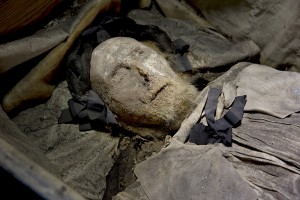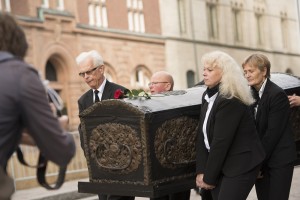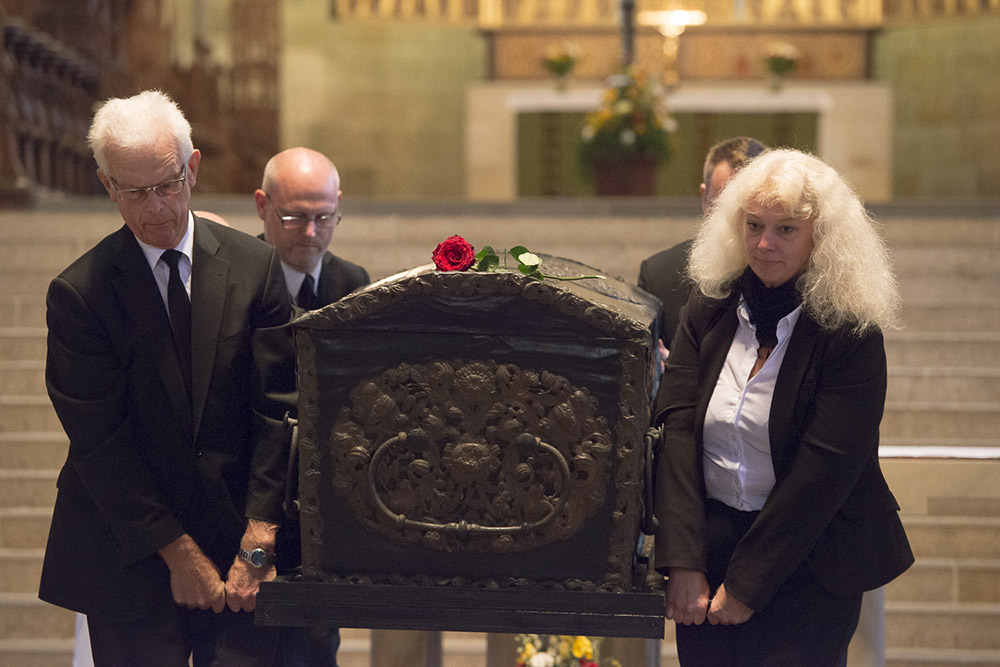A mummy in the cathedral? It may sound like a bad attempt at a student farce, but today the most famous embalmed person in Lund began his final journey.

Photo: LU / Gunnar Menander.
The CEO, Per Karsten, of the Historical Museum is excited. In the cathedral crypt lies one of Europe’s best-preserved bodies from the 17th century. A sleeping gentleman whose beard, skin and nails are intact, albeit a little bit worn out after all these years.
“Peder Winstrup is perhaps our only chance to really find out what it was like to live in 17th century Lund. His body is a unique medical history archive,” says Per Karsten
Peder Winstrup was bishop in Lund at the time when Skåne became Swedish, and he was also one of the important persons behind the founding of the university] After his death, he was placed in the cathedral.
Never truly at rest
It is not the first time Peder Winstrup is disturbed in his eternal rest. His casket has been moved around before. From the tomb chapel he was moved to the north tower. In connection with the renovation of the towers by the architect Helgo Zetterwall, he got a new temporary burial site, which would prove to be longer than ever before.
“The casket was supposed to be placed in the south tower as this site was considered nicer. But during the renovation he was placed in the crypt “temporary”. And there the casket was standing for 150 years,” says Dean Håkan Wilhelmsson.
Pictures of an exhumation in the 1920s gossiped that the body was unusually well preserved. A new opening in November last year confirmed the hopes – and opened up opportunities to examine the body thoroughly.

Photo: Daniel Kodipelli.
Buried after 350 years
Soon, one year’s intensive studies of Winstrup’s body will take place, and hopes are that even the internal organs should be in a good condition. After that, the plan is to give Peder Winstrup a proper funeral, nearly 350 years after his death. The casket goes to the Cathedral Museum, but Winstrup himself is going down into the ground. But given the fact that the museum also preserves and exhibits other historical relics, it raises a question.
If the body is in such a remarkable condition now, would it not be foolish to risk ruining it through a funeral? “The idea is that he should get a casket that preserve the body. It is important that future research can be carried out.”
After a short service in the cathedral, Peder Winstrup’s casket was finally carried out to a hearse, today adorned with the Danish and Swedish flag. A first journey to his final resting place. Or, at least, for now.
Text: Kenneth Carlsson
Translation: Lars Jansson
First published on lundagard.se September 11, 2014






